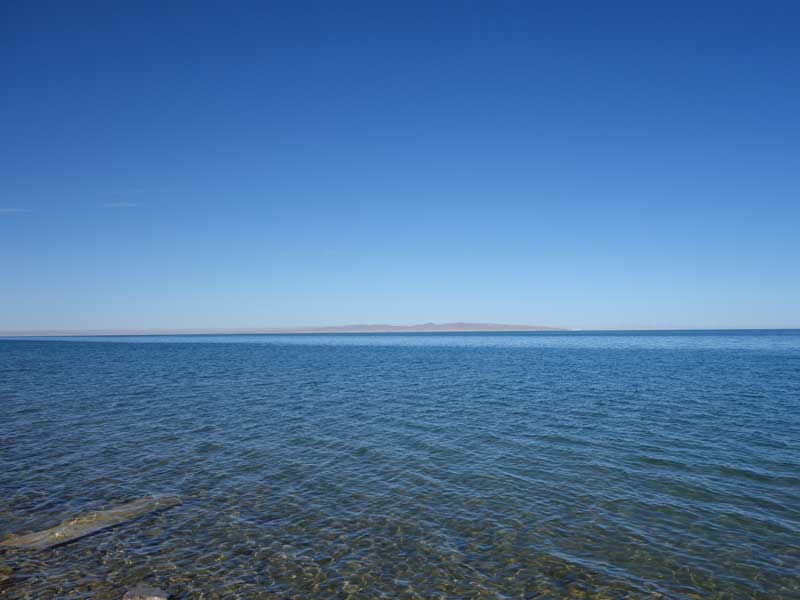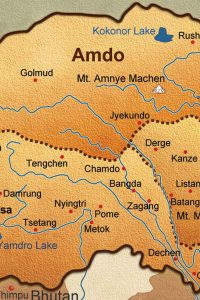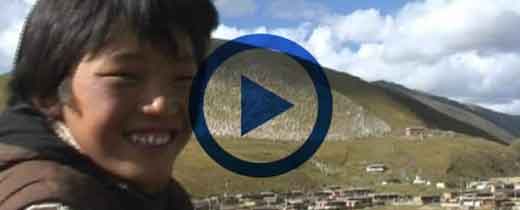
Amdo, originated from traditional Tibetan culture, is one of divisions of Tibet and it is often placed alongside “U-tsang” and “Kham”
Amdo is located on Qinghai-Tibet Plateau, and its scope is roughly equivalent to five Tibetan autonomous prefectures of Haibei, Hainan, Huangnan, Golog and Haixi in Qinghai Province, in addition, it also included Gannan Tibetan Autonomous Prefecture, Tianzhu Tibetan Autonomous County in Gansu Province, and northern part of Aba Tibetan and Qiang Autonomous Prefecture in Sichuan Province.
All of those regions are all located on the edge of Tibet Pleteau. Labrang Monastery of Tibetan Buddhist Academy is located in Gannan Tibetan Autonomous Prefecture. The 10th Panchen Lama was born in Amdo. Hoh Xil (Qiangtang uninhabited area in northern Tibet), and prestigious Repkong Thangkar art are all in this land.
“Amdo” Paraphrase
Amdo is also called “Do me” which means upper part (northern) of “mDo Khams”. In Yuan Dynasty, it was translated as “mdo smad” or “mto smad”.
According to “History of Amdo” that name of Amdo is to take from the first words of Amnye Marchen Mountain and Dola Mountain to form Amdo, and it was also said that the area of Amdo included present-day Gansu Tibetan area, Nagqu of Tibet, Qinghai Tibetan area and north Aba area of Sichuan. However, the contemporary understanding of Amdo is roughly same.
Amdo and Kham togehter formed an even larger area, which was called “mdo khams” during Tubo kingdom, and it was also translated as “Dogansi” or “Dogan“, meaning the area of convergence; In Yuan Dynasty, it was also called “mdo khams“
Culture
In Amdo, the most famous monasteries are Labrang Monastery which is now in Gansu Province, Qutan Monastery and Taer (Kumbum) Monastery .
Amdo dialect is mainly used in Amdoa. Its written based on pronunciation of ancient Tibetan language, so it is not affected by dialects, it is same everywhere in Tibetan areas.
Due to geographic relations, Amdo, which has always been on the edge of central Tibetan area, is closely related to Han culture in east and Altai culture in north. Historically, this place was also a place where many ethnic groups lived together. The ancestors of Tibetan, Xiongnu, Tuyuhun, Mongolian, Tu, Hui, Salar, Han people, etc., merged and communicated with each other, and gradually formed today’s unique Anduo culture.
In ancient times, Tibetans had a variety of geographic divisions for entire Tibetan area, including: U-Tsang 4 Ru (Dbus Gtsang ru bzhi), Ali Sanai (NgariSanai), mDo Khams 6 sGang, etc., OR divisions of U-Tsang, Kham, and Duo Me (Amdo).
U-Tsang 4 Ru (Dbus Gtsang ru bzhi) means the four mountain ranges and divisions of U-tsang; “Dbus Gtsang” is another method of writing of “U-Tsang”
Ali Sanai (Ngari Sanai) means three counties of Tibet, i.e: Burang county surrounded by ice and snow, Zanda county surrounded by rocks, and Rutok county (also known as “Mayu”) surrounded by lakes;
mDo Khams 6 sGang: refers to plateau areas of Amdo and Khampa, including 6 sGang of Semo sGang, Chawa sGang, Makang sGang, Bongpo sGang, Mazar sGang and Muyare sGang, and in addition 4 rivers of Jinsha River, Yalong River, Nujiang River, Lancang River;
mDo Khams 6 sGang
The latter division method appeared in Yuan Dynasty. The characteristics of three regions are summarized as “U-tsang – district that Dharma flourished, Kham — district that People is tall and handsome, Amdo — district that fine horses grow”. This kind of generalization is not simply a geographical concept, but a cultural connotation to that region.
There are vast grasslands in Amdo, and the ones in upper reaches of Yellow River and around Qinghai Lake are all excellent natural pastures. The grassland provides living space for Tibetan nomads, and correspondingly produced plateau nomadic culture, that is, a lifestyle suitable for high altitude areas, and accumulated rich and practical experience in plateau survival. “Amdd Horse-District” obviously summarizes characteristics of its nomadic culture.
Due to geographical isolation of many tribal groups, it naturally formed different dialects of Tibetan language. However, written-Tibetan-language is same throughout Tibetan area.
View destinations, attractions and tours in Amdo
Tours
Pre-made Packaged tours and hikes in Amdo
Destination
Cities, counties, towns and villages in Amdo
Attraction
Monasteries, mountains, holy lakes in Amdo





